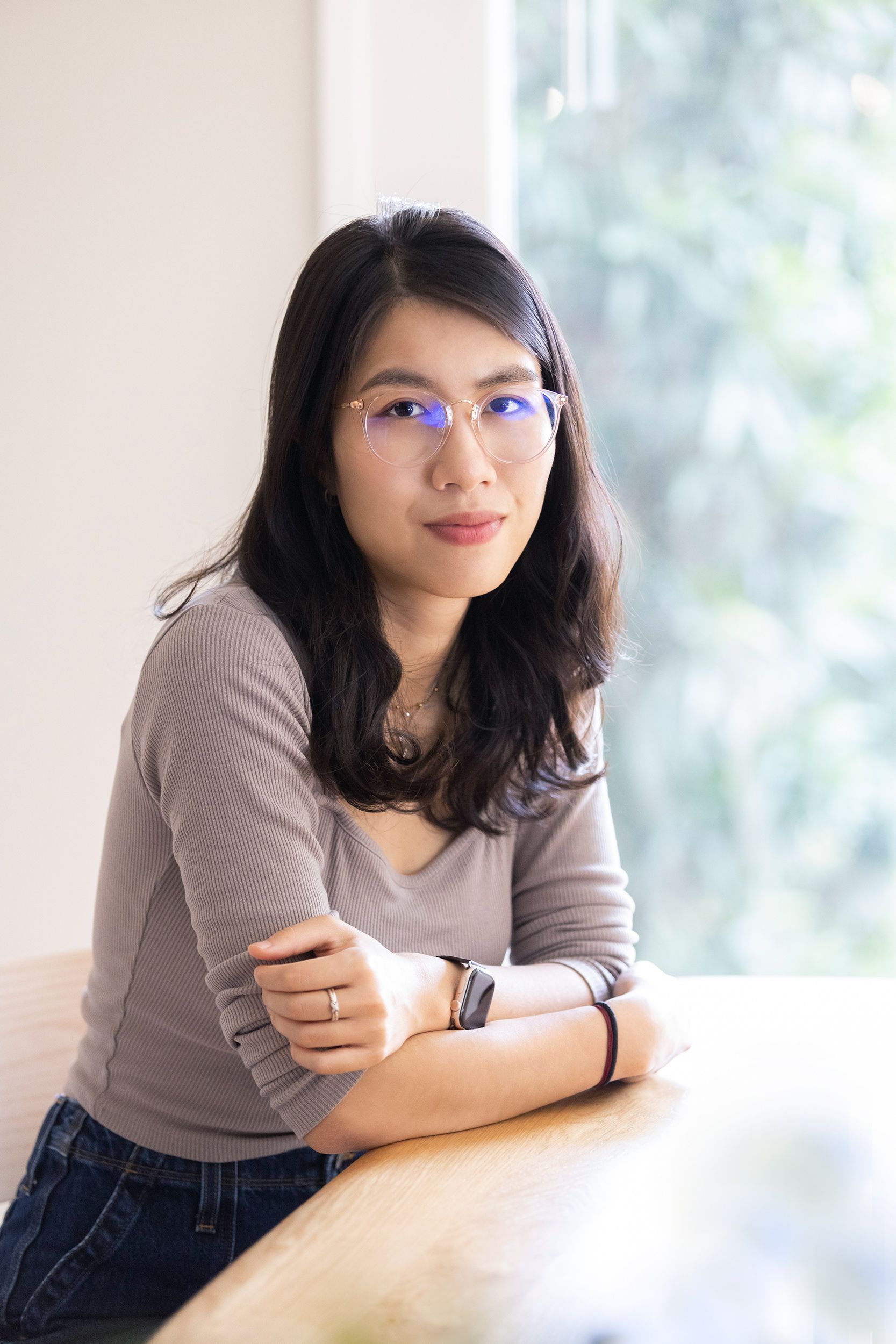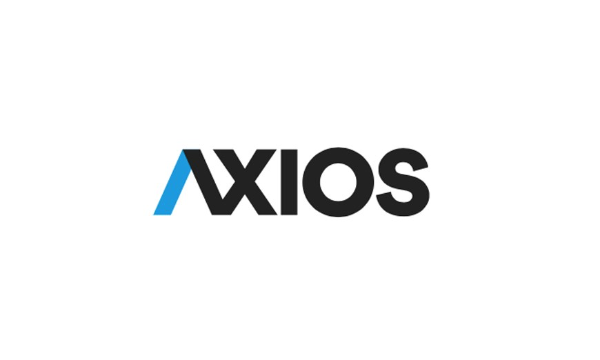
In today’s rapidly evolving tech landscape, the most impactful innovations are not just those built with cutting-edge technology but those designed with purpose.
As artificial intelligence and machine learning become integral to modern problem-solving, the challenge lies not just in creating impressive tools but in ensuring they address real-world needs and empower meaningful change. Success is defined by bridging the gap between technical ingenuity and human impact.
Phuong Ngo, a software engineer and creative technologist, exemplifies this philosophy. Her approach to technology is driven by a singular question: “Why?” She believes that understanding a project's purpose and end-users is the cornerstone of crafting resonant solutions.
"Technology should never exist just for the sake of it. Its purpose is to empower people to bring their ideas to life and make a tangible difference," says Ngo. "I strongly believe that coding and technology, in general, are not meant to exist in isolation or for the sheer excitement of technological advancements. Instead, they are tools to enable creativity and problem-solving.”
A Product-Oriented Approach
Ngo is a trailblazing software engineer and creative technologist whose innovative work bridges cutting-edge technology with user-centered design. Ngo’s academic journey laid the foundation for her career at the intersection of artificial intelligence, machine learning, and creative problem-solving.
Ngo’s experience is also backed by work at big tech companies like Adobe, the company behind Creative Cloud, as well as Work & Co, part of Accenture Song, one of the leading design agencies that developed apps for Lyft, Aesop, Vistaprint, and many more.
Ngo also holds a bachelor's degree in Computer Science from the National Technical University of Ukraine, the "Kyiv Polytechnic Institute," which is widely regarded as the country's leading technical university. With several years of experience working as both a designer and a software engineer, she often felt confined to simply "executing orders" rather than driving innovation.
However, that changed upon discovering the School of Machines, a highly selective creative technology program based in Berlin with the scholarship having an acceptance rate of just 3%.
She was selected as one of only six winners worldwide from a highly competitive pool of nearly 200 applicants representing 43 countries. This distinguished honor is awarded to individuals who have shown outstanding contributions to creative technology, artistic innovation, and human-centered design.
After being awarded a scholarship to attend, she spent a transformative month learning how to merge technology with creative expression. This experience ignited a passion for creative tech, ultimately inspiring her to pursue a Master's degree at New York University (NYU).
Ngo studied as part of NYU’s prestigious Interactive Telecommunications Program. She developed a multidisciplinary engineering approach that emphasizes the profound "why" behind every project, ensuring technology serves meaningful purposes rather than existing as an end in itself: “When I started working as a software engineer after my undergraduate degree, I often felt like I was just executing other people’s ideas without understanding the bigger picture,” she recalls. “It wasn’t fulfilling and didn’t always lead to the best user outcomes.”
While at NYU, Ngo also helped foster interest in creative technology among the general public. She developed and led highly rated sessions on topics like coding for innovative applications and integrating machine learning into web technologies at ITP Camp, inspiring students and professionals outside NYU to think beyond traditional boundaries: “ITP completely changed how I think about technology,” she says.
“It taught me that every decision, whether a line of code or a user interface design, should tie back to a clear purpose.”
The Role of Rapid Prototyping
Ngo’s expertise in rapid prototyping is pivotal in driving innovation. By swiftly creating functional prototypes, she enables teams to test concepts, gather valuable feedback, and refine their strategies before investing substantial resources in full-scale development. This approach ensures that ideas are both practical and impactful from the outset.
“Rapid prototyping is just about failing fast and learning faster,” Ngo explains. “It’s also a way to explore the ‘why’ in real-time. You can see how users interact with a prototype, identify pain points, and adjust your strategy accordingly.”
This approach has proven invaluable with her work on AI and ML teams. One notable project with Adobe was working on a highly technical AI tool to improve the search experience.
Ngo recalls: “I soon realized that although the technology sounded complex and exciting from the engineering perspective, it lacked clarity on what problem it was solving and how it was solving it. I quickly figured that the ‘why’ was missing here and drafted a prototype interface to show it to the potential client team for user interviews.
“By asking the ‘why’ and rapid prototyping, we had a chance to talk to a small group of prospective users and learn that it was not worth investing millions of dollars further in the project.
“Without the ‘why’, the company was planning to push the product into deployment first to see the result, which would require a lot of engineering time to polish & refine the code, which in the end would not bring as much value.
“Engineers often focus on what a tool can do, but they don’t always think about who will use it or why they’ll use it,” Ngo explains.
“That’s where I come in—to bridge the gap between technology and user needs. My role is refining the user flow, polishing the tool’s interface, and asking the critical questions: Who is this for? What problem does it solve? And how does it add value?
“Through user interviews, feedback analysis, and strategic adjustments, I helped ensure that the tools we developed were functional and meaningful to the people who would ultimately use them. This user-oriented perspective guides my work and drives my passion for innovation.”
The Power of Asking Questions
For Ngo, success in software engineering isn’t measured by lines of code or flashy features—it’s about purpose. As a product-oriented software engineer, her hallmark is questioning the intent and value behind every project. Ngo’s approach challenges the conventional engineering mindset of building for the sake of building. Instead, she focuses on aligning technological efforts with user needs and business goals.
The “why” is more than a single question—it’s a mindset that informs every aspect of her work. Whether collaborating with designers, product managers, or fellow engineers, she emphasizes the importance of curiosity and critical thinking.
“One of the first things I do when starting a project is ask, ‘Why are we doing this?’” she says. “It sounds simple, but it’s a question that can uncover so much. If the answer isn’t clear, it’s a sign that we must dig deeper.”
This questioning mindset extends beyond initial project planning. During development, Ngo continually revisits the “why” to ensure that every decision aligns with the product’s goals: “It’s easy to get caught up in the technical details and lose sight of the bigger picture,” she explains. “By returning to the ‘why,’ you stay grounded and focused.”
Collaboration and Communication
Ngo’s success as a product-oriented software engineer also stems from her ability to collaborate effectively across disciplines. She works closely with non-technical stakeholders, such as product managers and designers, to ensure that technical solutions align with broader business and user needs.
“My role often feels like being a translator,” she says. “I take complex technical concepts and explain them in a way that makes sense to people without an engineering background. At the same time, I help them articulate their needs in a way that engineers can act on.”
Ngo honed her technical skills from her bachelor’s degree in computer science back in Ukraine. She also learned the craft of cross-team communication while working on large-scale projects, such as Vistaprint, during her internship at Work & Co.
"I see myself as a collaborator more than an executor. If someone comes to me with an idea, I’ll question it, refine it, and work with them to make it truly effective," says Ngo.
“One thing that we were encouraged to do back in Berlin and NYU was ideating before tackling technical challenges. If an idea is thought through well enough, the execution becomes less of a problem. I have always taken that with me.”
This collaborative approach has earned Ngo a reputation as a bridge builder who fosters alignment and understanding between diverse teams: “Good collaboration starts with good communication,” she notes. “When everyone is on the same page, you can move faster and achieve better results.”
Balancing Creativity and Engineering
Her ability to think beyond her technical expertise makes Ngo's approach unique. By collaborating closely with non-technical teams, such as designers and product managers, she ensures that her team's solutions solve real problems. One of her strengths is transforming abstract ideas into actionable plans, often challenging stakeholders to think critically about the outcomes they want to achieve.
Even in her current role at Adobe, she often has to communicate with senior product managers and figure out which problems need to be solved.
Adobe has consistently led the way in creative technology innovation, with its products revolutionizing industries worldwide.
Ngo has been instrumental in this progress, playing a pivotal role in enhancing Adobe’s engineering capabilities, most notably through the integration of machine learning solutions and the streamlining of cross-functional collaboration across teams.
In one of the projects, Ngo discovered that although the product was user-driven, there was no practical way yet to analyze the data and understand the niche users.
She later shared the discovery with key stakeholders, suggesting the use of machine learning clustering algorithms to gain more insights and help identify content gaps. The idea was met with excitement and a request to come up with a POC (Proof of Concept) as soon as possible.
As Ngo attests, often, stakeholders are aware of a general problem but need help from someone more technical to suggest a suitable solution: “Engineers need to engage in more creative work to make the entire product development process as efficient as possible,” she says.
“Creativity isn’t just for designers or artists,” she says. “It’s a critical skill for engineers, too. When you approach a problem creatively, you open yourself up to possibilities that a purely technical mindset might miss.”
This creativity is especially evident in her work with generative AI, where she explores new ways to integrate machine learning into creative workflows: “Generative AI is a perfect example of how technology and creativity can intersect,” Ngo explains. “It’s not just about automating things, it’s about giving people new ways to express their ideas and bring their visions to life.”
Insights Gained and Future Horizons
Reflecting on her career, Ngo credits her focus on the “why” as the key to her success: “Technology is only as good as the problems it solves,” she says. “By focusing on the ‘why,’ you ensure that your work has real impact.”
Ngo is excited about the future of AI and its potential to empower users. She envisions a world where technology is more accessible and user-friendly, enabling people from all backgrounds to bring their ideas to life.
“My goal is to democratize technology,” she says. “I want to make it easier for everyone—not just engineers—to create, innovate, and solve problems.”
Ngo actively contributes to empowering women in technology through her involvement in mentorship programs with the Society of Women Engineers (SWE) and AnitaB.org.
These initiatives aim to support women engineers and professionals in advancing their careers while fostering a strong sense of community and collaboration. Ngo has been mentoring women from various backgrounds and helping them with various career issues, including looking for their first job, career change, or getting a promotion. Ngo’s dedication to understanding the "why" extends to her passion for mentoring and teaching.
She believes that helping others see the purpose behind their work can inspire more impactful results. Whether mentoring women engineers through programs like AnitaB.org or judging hackathons, the most recent being HackDavis, which had 900 participants, she consistently fosters a mindset of intentionality and focus.
“Mentorship is an incredible way to give back and support the next generation of women in tech,” Ngo shares. “I’m excited to work with mentees through programs like SWE and AnitaB.org, helping them grow in their careers and build confidence in their abilities. It’s inspiring to be part of such impactful communities championing diversity and collaboration.”
Ngo is also one of the mentors at Startup Bootcamp, the number one startup accelerator in Europe. With her expertise, she helps early-stage startups grow their products and also helps with selecting the next round of the cohort.
She was selected as one of just six winners of the 2019 p5.js Showcase—a prestigious and globally recognized exhibition that honors groundbreaking contributions to open source software, creative coding, and the broader digital art and interactive media communities.
A Legacy of Purposeful Innovation
Ngo’s career exemplifies the art of blending technical expertise with a deep understanding of purpose. For her, engineering isn’t just about writing code or developing features. It’s about creating solutions that make a difference in people’s lives.
Known for her innovative approach, Ngo combines strategic thinking with a strong foundation in software engineering, earning her a reputation as a problem-solver who prioritizes meaningful impact over mere technical achievement.
“At the end of the day, technology isn’t the star of the show but a tool,” she explains.
“What matters is how that tool empowers people, simplifies their challenges, and sparks new possibilities. That’s what motivates me every day—knowing that my work can help someone turn an idea into reality, solve a problem, or improve their experience in some way. That’s why I love what I do.”







